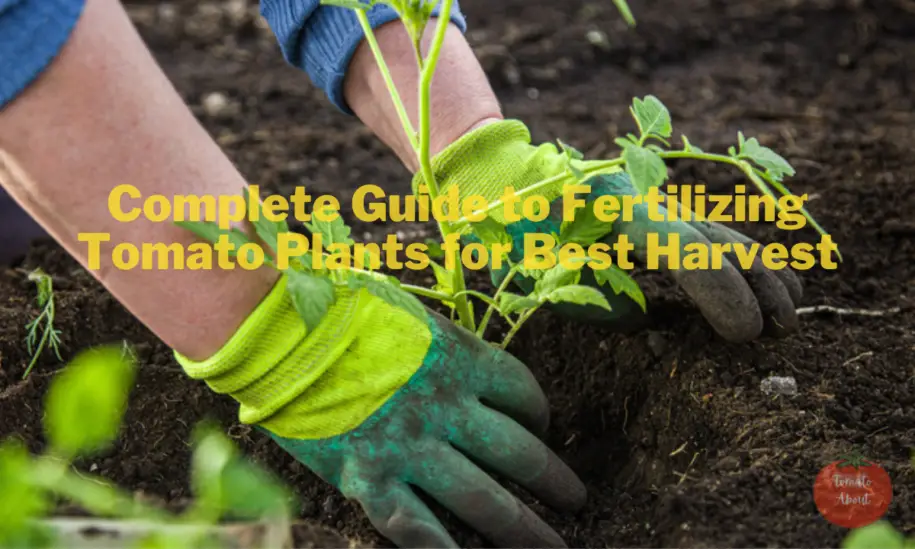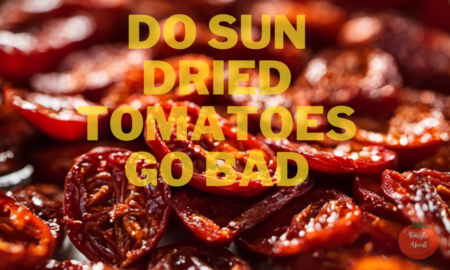As an avid gardener, there’s nothing more satisfying than watching red, juicy tomatoes ripening on the vine. But growing plump, flavorful tomatoes doesn’t happen by chance. Paying close attention to soil health and nutrients is critical for success. While tomatoes need sun and water to thrive, proper fertilization takes tomato cultivation to the next level.
When I first started growing tomatoes, I was overwhelmed by all the fertilizer options and conflicting advice. Through trial and error each season, I’ve dialed in an effective fertilizing routine tailored to my garden’s conditions. Now I enjoy bountiful tomato harvests and raise the biggest, tastiest tomatoes on the block.
In this complete guide, I’m excited to share everything I’ve learned about fertilizing tomato plants over the years. We’ll cover when and how much to fertilize at each stage of growth, decoding fertilizer labels, and the best practices for applying different types of fertilizer. After reading this, you’ll have the knowledge and confidence to nourish your own tomato plants for a record-breaking harvest this season!
Determining Your Tomato Plants’ Nutrient Needs
Tomatoes are considered heavy feeders, meaning they require more nutrients compared to other garden crops. However, many gardeners over-fertilize, assuming more is better. Too much fertilizer can damage plants and contaminate groundwater. The key is providing the right amounts of essential nutrients at each stage of growth.
The three primary macronutrients tomatoes need are:
- Nitrogen (N) – promotes lush vegetative growth
- Phosphorus (P) – supports root, flower, and fruit development
- Potassium (K) – contributes to overall plant health and fruit quality
Tomatoes also require smaller amounts of secondary nutrients like calcium, magnesium, and sulfur for strong cell structure and fruit formation.
The ideal NPK ratios shift as the plant matures. Young seedlings need more nitrogen for leaf growth. Fertilizing mature plants with high nitrogen can delay fruiting. As plants enter the reproductive stage, phosphorus and potassium become more important.
Many factors impact how much supplemental fertilizer your tomatoes need, including soil type, organic matter, cover crops, and more. Getting a soil nutrient test annually provides the best fertilizing guidelines for your unique garden. At a minimum, observe plant growth and monitor for nutritional deficiencies. Adjust your program based on visual cues.
Fertilizing Tomato Plants for Maximum Yield
Now that we’ve covered tomato nutritional requirements, let’s discuss when and how much to fertilize at each stage of growth.
Planting
When transplanting seedlings or sowing seeds, incorporating well-aged compost into the soil provides a nutritional boost. Compost releases nitrogen slowly as it breaks down. Mix 2 to 4 inches of compost into planting beds before arranging plants.
Compost alone may sufficiently feed young plants for several weeks. Monitor leaf color and growth rate. If plants appear stunted or light green, it’s time to supplement with additional fertilizer.
Tip: In beds with poor soil, sprinkle a small amount of balanced fertilizer (10-10-10) or bone meal at the bottom of planting holes to encourage root development. Avoid direct contact between concentrated fertilizers and roots or stems which may cause burning.
Vegetative Stage
Four weeks after transplanting or when seedlings have 3-4 true leaves, it’s time for the first fertilizer feeding. Select a balanced fertilizer with slightly higher nitrogen like 10-5-5. This strengthens leaf and stems growth during the plant’s critical establishment period.
Apply 1/4 cup fertilizer per plant, scattered in a ring 6 inches from stems. Follow label instructions for specific products. Water deeply after feeding to dissolve fertilizer and carry nutrients to plant roots.
Every 2-3 weeks, repeat fertilizer applications at the same rate to sustain vigorous growth. Discontinue feeding if lower leaves are yellow or leaf tips brown—signs of possible nitrogen toxicity. Resume when plants appear pale or stunted.
Tip: Use an organic fertilizer like fish emulsion, compost tea, or worm castings to encourage beneficial soil microbes. Organic sources break down slowly, reducing burn risks.
Flowering & Fruiting
Once flower buds appear, it’s time to switch to a fertilizer with more phosphorus and potassium to support reproduction and fruit bulking. Common options include 5-10-10, 5-10-5, or 5-10-10.
Apply fertilizer every 2 weeks according to package directions to keep plants well-fed during peak production. Scatter evenly around the base of plants. Discontinue fertilizing once the first fruits start ripening to redirect energy to maturation versus new growth.
Excess nitrogen during fruiting can suppress flower and fruit production. If using a balanced fertilizer, reduce the application rate by half.
End of Season
Determinate tomatoes complete their lifecycle once the fruit has ripened. At this stage, fertilizing is ineffective.
For indeterminate varieties that continue growing until frost, you can apply a reduced dose of 5-10-10 monthly through the summer to replace nutrients lost from harvesting. Don’t overdo it, as extra nitrogen causes more vegetation instead of fruits.
How to Read Fertilizer Labels
Understanding how to decipher fertilizer labels is an essential skill for tomato gardeners. Here’s what the numbers mean:
- The first number represents the percentage of readily available nitrogen (N)
- The second number indicates available phosphorus (P) as P2O5
- The third number denotes the percentage of soluble potassium (K) as K2O
For example, a 10-5-5 fertilizer contains:
- 10% nitrogen
- 5% available phosphorus
- 5% soluble potassium
The remaining ingredients do not need to be listed. However, higher-quality fertilizers will provide a complete breakdown of primary, secondary, and micronutrients.
The sequence of the three numbers reflects the plant’s changing needs over time. Young plants need more N for foliar growth while fruiting plants require more P and K.
Some other key terms:
- Slow or controlled release – nutrients are released over an extended period instead of all at once. Reduces burn risk.
- Organic – derived from plant or animal sources like compost, manure, bone meal, etc. Improves soil biology.
- Synthetic – formulated using inorganic mineral salts. Quickly available but may damage soil structure.
- Chelated – contains nutrients bound to organic molecules that improve absorption. Helpful in alkaline soils.
Look beyond the NPK numbers to make the best fertilizer choice for your garden!
Different Fertilizer application methods
Proper fertilizer application takes some finesse. How and where you deliver nutrients impacts availability to plant roots. Using the right technique for each fertilizer type prevents waste and damage.
Follow this guide to master the art of fertilizing tomatoes:
Broadcast Granular Fertilizers
Dry granular fertilizers are a popular choice for vegetable gardens. They slowly release nutrients over time.
Spread granules evenly in a ring 6 to 8 inches from the plant stem. Use the recommended rate per plant, erring on the side of less. Too much causes burn.
Lightly rake granules into the top inch of soil to prevent them from washing away. Don’t dig too deeply or place them right next to stems.
Water thoroughly after application to dissolve fertilizer and carry nutrients down to roots. Avoid heavy water that washes fertilizer beyond the root zone.
Reapply every 4 to 6 weeks based on package directions. Rotate the application zone around the plant.
Tip: Use less fertilizer for seedlings and stressed plants. Granules close to stems can burn.
Mix and Water in Liquid Fertilizers
Liquid fertilizers like fish emulsion provide an instant nutrient boost. They also wash away quickly, requiring regular applications.
Stir the recommended amount into water per label instructions. Don’t exceed concentrations that can burn plants.
Avoid spraying the fertilizer mixture directly on the leaves. Always apply to the soil. Leaf burn stops photosynthesis.
Water slowly at the base of plants so fertilizer reaches the roots. Target areas beyond the original planting hole where roots expand.
Feed established plants every 2-3 weeks. Seedlings may only need monthly feedings as roots are still small.
Tip: Rotate applications around the root zone to prevent localized buildup. Salts in chemical fertilizers burn roots.
Side-dress with Compost or Manure
Organic options like compost and manure slowly decompose, providing a gentle nutrient release.
Spread 1-2 inches in a ring around plants, 6 inches from stems. Keep away from direct contact with stems and leaves.
Lightly mix into the top few inches of soil so nutrients are accessible as organic matter breaks down.
Reapply every 4-6 weeks based on observations. Look for signs of deficiency like stunting.
Tip: Well-aged manure is at a lower risk for burning. Compost tea provides an immediate nutrient boost.
The Risks of Over-Fertilizing Tomato Plants
It’s easy to think more is better when feeding hungry tomato plants. But excessive fertilizer causes more trouble than it’s worth.
Too much nitrogen late in the season results in bushy plants with dense foliage and few fruits. It also makes plants more susceptible to disease and insect damage.
Overapplying any fertilizer can burn roots, leading to stunted growth. Excess salts in the soil prevent plants from taking up water properly.
Many gardeners learn the hard way that it’s far easier to correct under-fertilization than over-fertilization. When in doubt, add less! Tomato plants will show visible symptoms if they require more food.
Use organic, slow-release fertilizers at modest rates to minimize the chances of overdoing it. And remember to stop fertilizing entirely once the fruit set is well underway.
Foliar Feeding – an Extra Nutritional Boost
In addition to side-dressing soil with fertilizer, you can also give tomato plants a bonus nutritional boost through foliar feeding.
Foliar sprays deliver nutrients directly to leaves, which allows plants to take up and utilize those nutrients very rapidly. Foliar fertilizing works nicely as a supplemental feeding method for added plant vigor and fruit quality.
Some tips for effective foliar feeding:
- Use diluted fish emulsion or liquid kelp extract. These organic options won’t burn leaves.
- Spray plants early in the morning before the hot sun evaporates moisture from leaves.
- Repeat weekly for a continuous benefit, especially during fruit development.
- Target the undersides of leaves for best nutrient absorption.
- Rinse plants with clean water after each application to prevent mineral deposits on leaves.
With a little trial and error, you can make foliar feeding a productive part of your tomato fertilizing routine. Just don’t expect it to entirely replace side-dressing the soil!
Troubleshooting Nutrient Deficiencies
Sometimes despite our best efforts, tomatoes still show signs of hunger. Here are some common nutritional shortfalls and organic remedies:
- Nitrogen deficiency – Leaves turn light green. Boost with compost tea, alfalfa meal, or blood meal.
- Phosphorus deficiency – Reddish leaves and stunted growth. Add bone meal or rock phosphate.
- Potassium deficiency – Yellow leaf edges and spots. Supplement with wood ash, kelp, or greensand.
- Calcium deficiency – Tomatoes develop blossom end rot. Top dress with lime or crushed eggshells.
- Magnesium deficiency – Interveinal leaf yellowing. Apply Epsom salts or dolomite lime.
Pay close attention to visual cues and adjust your fertilizing program to keep plants properly nourished throughout the season.
Putting It All Together – A Fertilizing Game Plan
We’ve covered a lot of ground here! Let’s summarize it into a step-by-step fertilizing strategy for raising vigorous, high-yielding tomato plants:
Before transplanting:
- Test soil and amend with compost and a balanced organic fertilizer like Dr. Earth Vegetable Garden Fertilizer if needed
At transplant:
- Add a small amount of gentle starter fertilizer like worm castings to planting holes if desired
After transplanting:
- Wait 2-3 weeks before fertilizing newly transplanted tomatoes
- Side-dress each plant with 1/2 to 1 tablespoon of balanced organic fertilizer
- Repeat fertilizing every 2-3 weeks, increasing amounts to 2-3 tbsp per plant
- Switch to a fertilizer higher in phosphorus & potassium as plants start heavy fruiting
- Stop fertilizing entirely 6 weeks before the expected harvest
- Use foliar sprays as a supplemental feeding strategy
Stay tuned in to your plants, adjust amounts based on plant response, and you’ll master the art of fertilizing tomatoes for maximum harvests!
Frequently Asked Questions
How often should tomatoes be fertilized?
Tomatoes need a consistent feeding every 2-3 weeks from transplant until 6 weeks before your expected final harvest. Earlier on, smaller amounts of nitrogen-rich fertilizer are ideal. As plants start heavy fruiting, switch to a fertilizer with more phosphorus & potassium.
When should I stop fertilizing tomato plants for the season?
Cease all fertilizer applications 6 weeks before your expected final harvest. This gives time for any remaining nitrogen to fully dissipate so plants can focus on ripening existing fruits. Excess nitrogen late promotes foliage over fruit production.
Can I use Epsom salts to fertilize tomato plants?
Yes, Epsom salts provide magnesium, one of the key nutrients tomatoes need. Apply 1-2 tablespoons per plant, scattering lightly around the plant and watering into the soil every 2-4 weeks. Epsom salts can also be dissolved in water and foliar sprayed onto leaves.
What’s the best fertilizer for preventing blossom end rot?
Blossom end rot results from calcium deficiency. Adding crushed eggshells or bone meal to soil provides a slow-release calcium source. Liquid calcium supplements are also available. Maintaining consistent soil moisture also helps prevent blossom end rot.
Should I use synthetic or organic fertilizers for tomatoes?
Organic fertilizers like compost, manure, bone meal, etc. are always the best choice for tomatoes. They release nutrients gently over an extended period. Tomatoes are very sensitive to synthetic fertilizer salt damage. If going the synthetic route, only use options clearly labeled for vegetable gardens.



